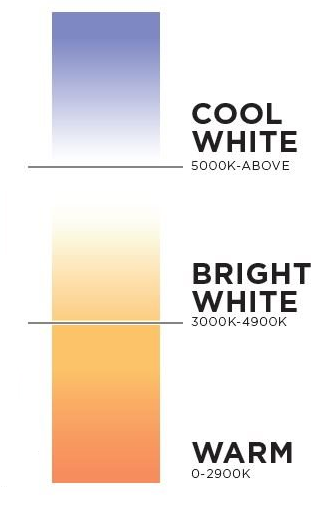How an LED Light Bulb Works
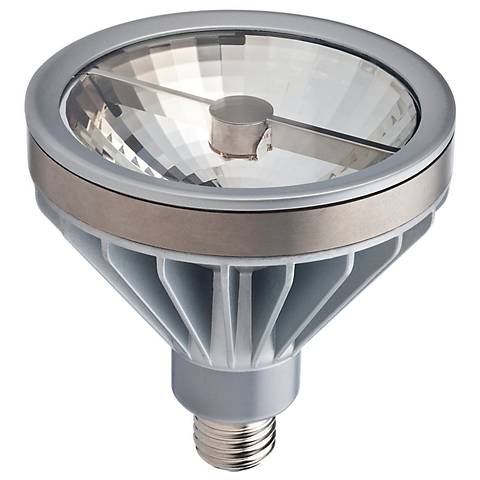
A lot of things have changed since the light bulb was invented. Continued innovation has created more options than ever for consumers to illuminate their spaces.
In this article, we cover what you need to know about LED light bulbs, from their wide-ranging benefits to how they stack up to other bulb types. By the end, we think you’ll agree that, when it comes to lighting at least, change isn’t a bad thing at all.
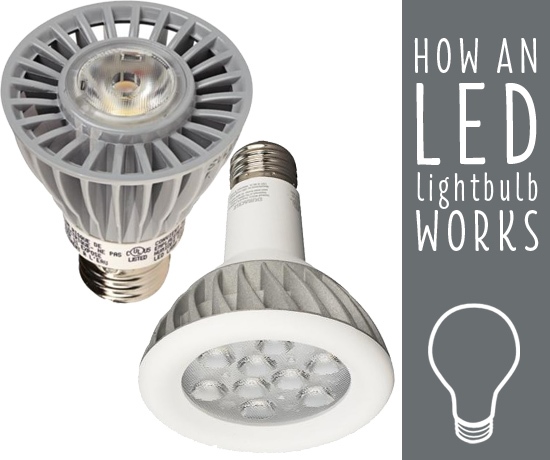
What Does LED Stand for?
LED stands for Light Emitting Diode. The “light emitting” part is self-explanatory, but what exactly is a diode? And how does that differentiate LEDs from other types of light bulbs? More on that below.
How Do LED Bulbs Work?
An LED bulb produces light by passing the electric current through a semiconducting material—the diode—which then emits photons (light) through the principle of electroluminescence.
This essentially means that a material (in this case, the diode) casts light when power is applied to it, hence the phase light emitting diodes. Electrons jump from one side (an electron-full side) to another (an electron-deficient side) across a junction (the “p-n junction”). Think of it this way: When power is applied to the p-n junction, the side lacking in electrons wants to be filled up with the charged electrons from the other side, and when power is applied the electrons get eager to move. During this process, light is created.
In contrast, an incandescent light bulb works by passing electricity through a small wire, or filament. The electrical resistance of the filament causes it to get so hot that it glows, producing light.
The fact that LED lights do not rely on heat to produce its light means it runs cooler and is much more energy-efficient than an incandescent light bulb.

What are the Benefits of LED Bulbs?
Energy-efficient: LED bulbs don’t lose nearly as much energy to heat as incandescent bulbs, so you get the same light with less wattage.
Safety: LEDs do not contain mercury like other bulbs such as CFLs or fluorescent lamps.
Long-lasting: Last up to 50,000 hours while incandescent bulbs burn out after 1,000 to 2,000 hours and CFLs after around 15,000.
Dimmable: These bulbs can be adjusted with LED-rated dimmers to enhance the lighting in your space.
Slow Failure: While many bulbs burn out in a flash, LEDs slowly fade, giving you extra time to find a new bulb.
LED bulbs are some of the most efficient lighting solutions available today and these designs are only growing more versatile and affordable.
Can You Put LED Bulbs in Regular Light Fixtures?
Yes, you can put LED bulbs in regular lighting fixtures. This includes fixtures that have previously used incandescent bulbs or CFL bulbs. After all, LED light bulbs are intended to replace old light bulb designs that are less energy efficient.
Be sure to choose an LED bulb with a base, shape, and wattage that is compatible with the fixture. As LED bulbs and light emitting diodes are being manufactured in every possible form and design, it should easy to find the right fit for your lamp or chandelier.
Many people are confused when it comes to the wattage. They think that they have to use an LED bulb with the exact same wattage as an incandescent or CFL bulb. However, this is not the case. LED bulbs use less watts than other designs to produce a similar light output. For example, a 10 watt LED bulb can produce the same light output as a 60 watt incandescent bulb. This is a good thing, because it means that LED bulbs use far less energy to create the same amount of light. So when you replace an old light bulb for with a modern LED bulb, you should be going for a lower wattage.
For more info, check out our light bulb replacement guide.
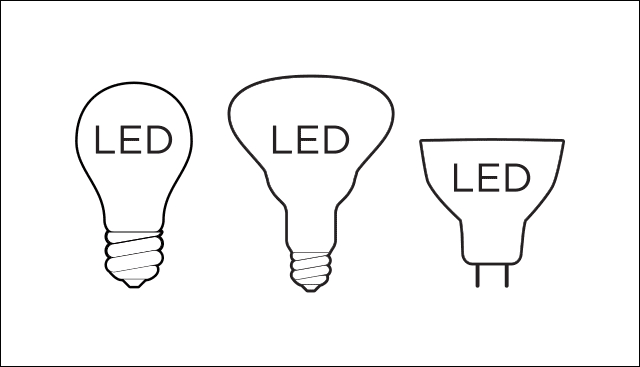
How Long Do LED Bulbs Last?
The average LED light bulb lifespan is 25,000 hours.
This is much longer than the average incandescent bulb lifespan (1,000 hours) and the average CFL bulb lifespan (10,000 hours). Not only are LED bulbs the most energy efficient design, they’re also the most durable and long lasting. While LED bulbs are more expensive to purchase than their incandescent and CFL counterparts, they’re actually more cost effective in the long term, as they last longer and consume less energy.
However, each bulb is different, so be sure to check the product details before purchase if you want the exact listed lifespan.
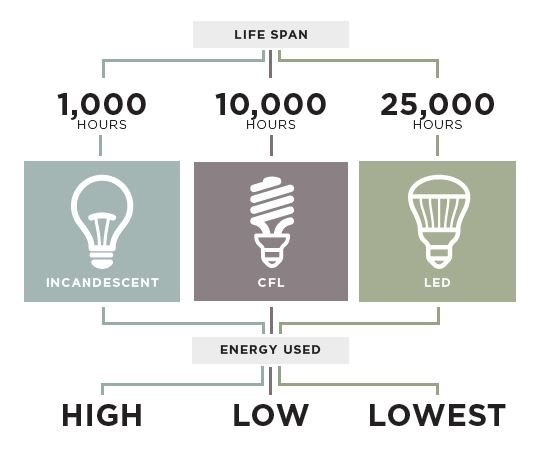
What Color is an LED Bulb?
LED color temperature normally ranges from cool white to warm yellow, though LED lights tend to be cooler than other types of light bulbs. If it’s important to you, check out the listed color temperature of a light before purchase. The higher the color temperature, the “cooler” the light is, which means it produces a whiter light. When the color temperature is lower, the bulb gives off a “warm” or yellow light output.
For more information, check out LED color temperature guide. And if you’re looking for light bulbs in a more unusual color, such as red or green, check out our specially-designed colored light bulbs instead.
Why Were LED Bulbs Invented?
With all the advances in lighting technology, we’ve entered a new era of illumination where we have more quality options for lighting our spaces than ever before. And the truth is, in spite of all its success, the traditional incandescent light bulb does come with its own unique set of disadvantages. Overall, standard bulbs are not very energy-efficient, and they produce lots of excess heat because of how they are designed.
In a world where eco-conscious thinking and action are becoming more frequently commonplace, both lighting brands and consumers are turning to newer and more efficient light bulb designs like the LED light bulb. Currently, LED bulbs are the most energy efficient and eco friendly light bulbs that you’ll find on the market.
While LED technology has been around since the 1960s, the capability of these incredible devices has surpassed what seemed imaginable. Early on, LEDs could only produce a dim red light that was best used for small electronic devised like remote controls and calculators. Today, LED bulbs can produce a host of colors in a range of temperatures.
More to Explore
That’s the end of our LED light bulb guide, but there’s still more to explore.
To identify a type of bulb, use the visual guide on our Light Bulb Identifier and Finder Guide.
Still Have Questions?
Call 800-782-1967 to speak with one of our friendly, professional Lighting & Home Decor Consultants or visit a Lamps Plus location near you. Whether via phone or in person, we’re happy to assist you in choosing the right light bulb.
More Light Bulb Ideas and Advice
Lumens to Watts: the Key to Buying Replacement Light Bulbs
How a Halogen Light Bulb Works

